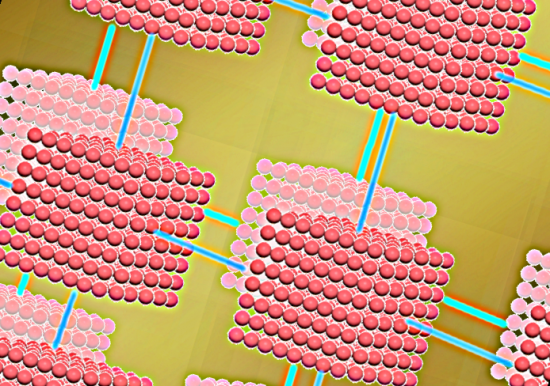BY LETTER
MOTE
Technology > Application > Computronics
Technology > Technology Type or Material > Drytech/Hylotech
Technology > Technology Type or Material > Nanotech
Technology > Technology Type or Material > Virtual/Infotech
Technology > Technology Type or Material > Drytech/Hylotech
Technology > Technology Type or Material > Nanotech
Technology > Technology Type or Material > Virtual/Infotech
Molectronic Omniprocessing TEchnocyte | |
 Image from Steve Bowers | |
| Hundreds of buckyball-based computational MOTEs are connected together into larger units called MITEs | |
First developed in the early Interplanetary Age, motes eventually replaced the so-called 'chips' as the basic component of computer hardware.
Basic Structure and Capabilities
The basic component on a standard mote is a buckministerfullerene sphere (Carbon 60) approximately 1nm in diameter. Nanoconstructed input/output links and control structures increase the size of each mote to approximately 4nm in each dimension. Each mote unit is able to act as a quantum dot.Using its quantum dot nature, each mote can operate as either a digital or analog processor, or as a single qubit quantum computer, on demand and at need. Grouped together in a three-dimensional array of several hundred or more units (often called a MITE for Multiple Integrated TEchnocytes), motes are able to form an extremely powerful computing substrate able to change its operating mode at will. Further, operating as a multi-function processor, the mite array can rapidly transfer data throughout its structure by storing information in electron spin states and then using quantum tunnelling to transfer the electrons within the array.
In addition to their versatile and extensive processing capabilities, motes are able to store a considerable amount of data in the stabilized spin states of the electrons that make up their core structure. The buckministerfullerene core of each mote contains 60 carbon atoms incorporating 360 electrons, each able to store some 100 bits of information, or a total of 36,000 bits of information per mote. While this is a minuscule amount of data in and of itself, the combined storage capabilities of an entire array of mote units can be enormous.
As an example, a single mite array of 1 cubic millimeter constitutes some 1.6x10^16 motes able to perform the equivalent of 21.6x10^16 quantum parallel computations per second and store some 5.6x10^20 bits of information.
Early mite technologies revolutionized data processing in the Interplanetary Age and may have been a direct factor in the development of the first SI:1 intelligences. Later developments of the technology, employing the ability of buckministerfullerenes to store other atoms within their structure, and still later to act as a stable platform for magmatter based processors, have assured the mote a major place in the history of computational technologies even into the present era.
Related Articles
- Buckyball - Text by M. Alan Kazlev
Short for buckminsterfullerene, and part of a larger class of molecules known as as fullerenes, the third form of carbon. Any of a number of roughly spherical molecule formed of a large number of carbon atoms. The smallest and most common form of buckminsterfullerene is C60; it has 60 carbon atoms in a soccer-ball shape, but there are many variants. The third form of carbon. After atomic age visionary thinker and inventer R. Buckminster Fuller's building designs. - Computronium
- Magmatter
- Nanomachine
- Ultimate Chip
- Universal Computer - Text by M. Alan Kazlev
An idealized hypothetical computer that is capable of universal computation, which means that it is capable of computing anything that can in principle be computed. Given a description of any other computer or program and some data, it can perfectly emulate this second computer or program.
Appears in Topics
Development Notes
Text by Todd Drashner
based on suggestions by John B and Mauk Mcamuk
Initially published on 19 April 2004.
based on suggestions by John B and Mauk Mcamuk
Initially published on 19 April 2004.






